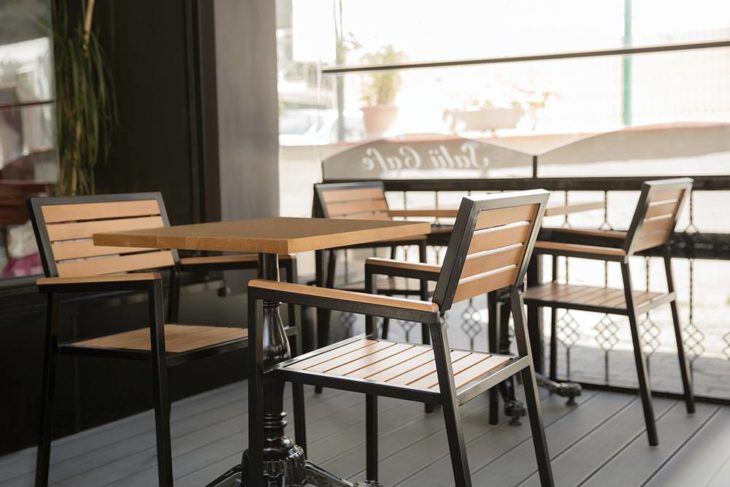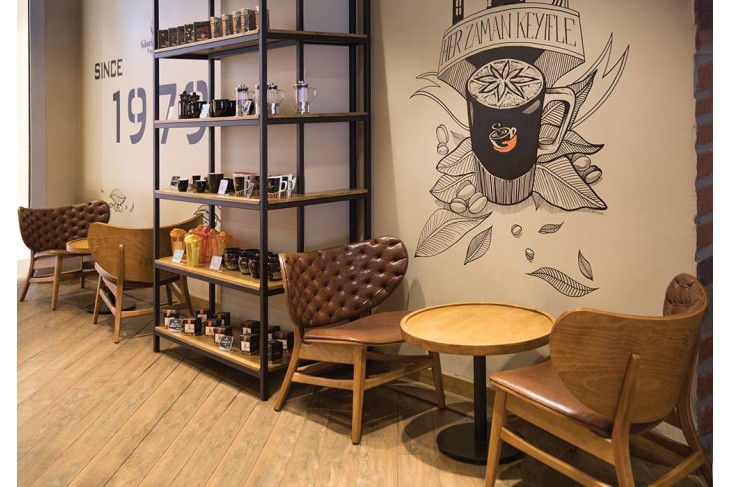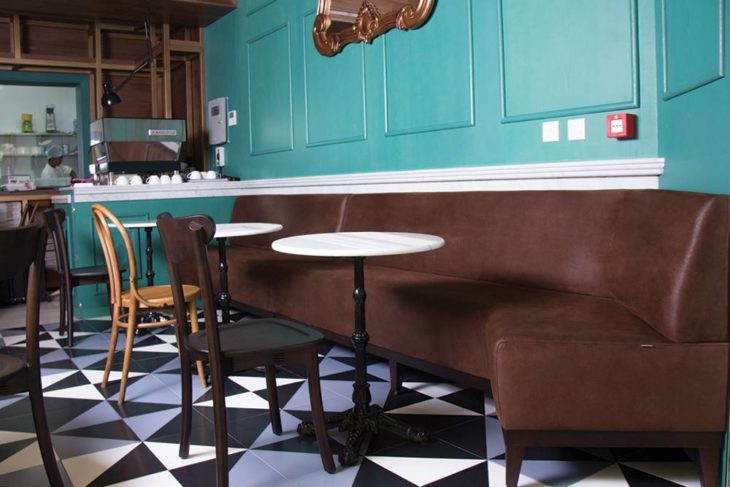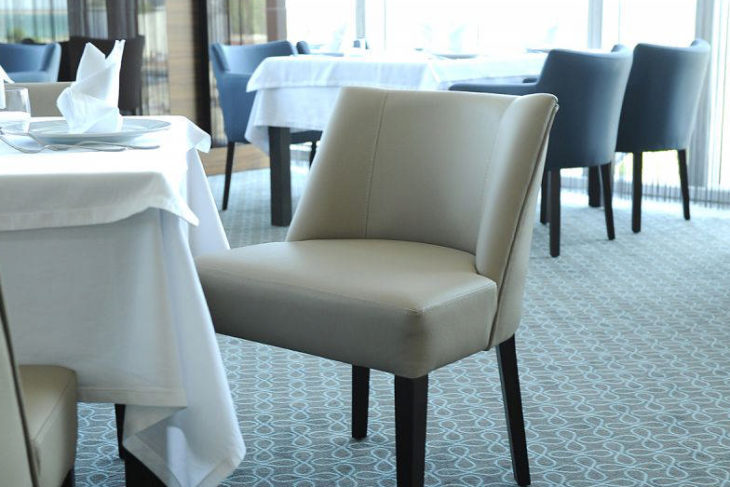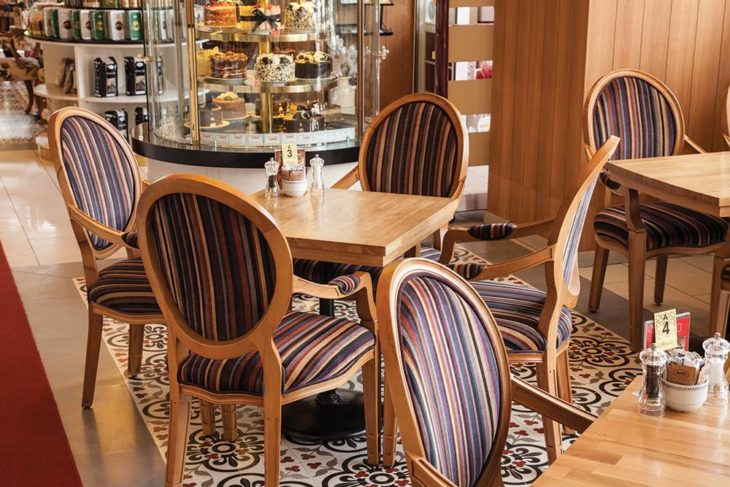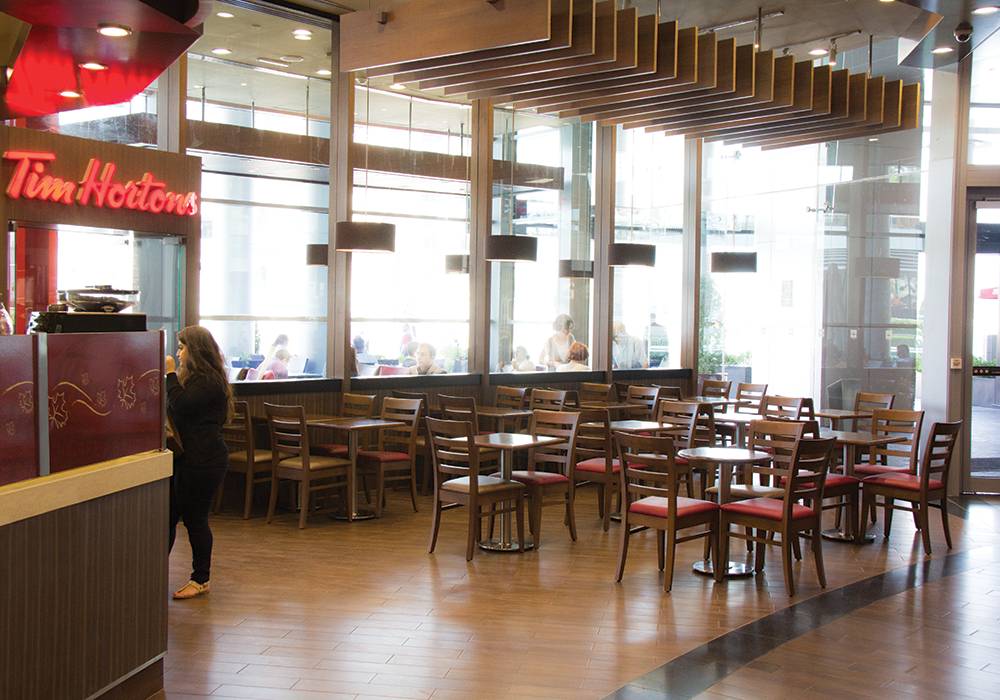
Ernie Kovacs was television’s most original visual innovator and surreal comic genius, who made us see the world in a different way. He was a true artistic pioneer, who created his unique magic when the medium was just in its infancy.
The pictures that Kovacs conjured along the way, have had an enormous influence on a variety of television shows, as well as individual performers and writers who followed. These included: “Rowan and Martin’s Laugh-In,” “Monty Python’s Flying Circus,” and “Saturday Night Live,” to name just a few. In addition, performers and writers, such as Steve Allen, Johnny Carson, David Letterman, Chevy Chase, and Mel Brooks, all owe a great deal to this inspiring and creative free spirit.
In 1986, the Museum of Television and Radio (now the Paley Center for Media) presented an exhibit of Kovacs’s work, called “The Vision of Ernie Kovacs.” In the Museum’s booklet for the show, the Pulitzer Prize winning television critic, William Henry III wrote:
“Kovacs was more than another wide-eyed, self-ingratiating clown. He was television’s first significant video artist. He was its first surrealist…its most daring and imaginative writer. He was television’s first and possibly only auteur, and he was a genius… Kovacs’s genius lay in the realm of art. There, a genius is someone who causes an audience to look at the world in a new way.”
MEETING ERNIE KOVACS
In 1953, I first encountered Ernie Kovacs when I was 12 years old. Ernie’s early morning television show, “Kovacs Unlimited,” was being aired on network television in New York City on WCBS (channel 2). It was on this show that I first saw many of the visual sight gags, surreal illusions and characters that became an essential part of his astonishing and original vision. But as a 12-year-old kid, I just thought the show was very exciting, lots of fun and really cool!
As an avid fan of the show, I, immediately, joined Ernie’s Early Eyeball Fraternity and Marching Society (EEFMS) and, officially, became an EEFMS member. For years, I proudly carried my EEFMS membership card around in my wallet, and when called upon, would sing the EEFMS song, while saluting (left index finger extended, and held over left closed eye):
“Hail to thee, oh EEFMS members, thee so brave and strong,
Through hot Julys and cold Decembers, sing our EEFMS song.
EEFMS, oh EEFMS, EEFMS, oh EEFMS,
We say this now with no misgiving,
If you’re not EEFMS, you’re not living!”
Then on one spring day in 1953, my good friend Arnie Eastman and I decided to “crash” Ernie Kovacs’s studio at WCBS. Armed with our EEFMS membership cards, and the password: “It’s been real!,” we worked our way past the downstairs entrance guard and arrived, by elevator, at his studio floor. After we knocked on Kovacs’s studio door, we were greeted by a member of his staff, who told us to go away. But my friend, Arnie, who was very persistent continued to beg this staff member to let us in. Suddenly, we heard a voice from within the studio: “what’s the problem, Andy?” Then Ernie Kovacs came to the door, and after we explained that we were huge fans, and EEFMS members, he invited us into the studio, and seated us in two director’s chairs, right in front of the set! (wow!)
The set was comprised of a long table pitched on an angle, with the television camera bolted to the floor at the same angle. So when we viewed the television monitor, the table appeared to be in its normal horizontal position, not on an angle.
Then, one of Kovacs’s characters came out on the set carrying his lunchbox, and sat down at the tilted table. At the other end of the table sat another man reading his newspaper. Then each time the man with the lunchbox took an item out of his lunchbox and attempted to place it on the table, it would either slide or roll down the table into the lap of the man reading his newspaper. The finale of this sight gag came when the man with the lunchbox took out his thermos bottle, and attempted to pour some milk into his glass (which had been previously secured to the tabletop before the sketch began). The stream of milk moved at a bizarre angle, nearly parallel to the tabletop, completely missing the glass!
It was this classic sight gag stunt, and numerous other surreal effects, that shocked and delighted television audiences, and, ultimately, became a part of his renowned visual effects vocabulary.
After we stayed through the entire rehearsal of the show, Ernie Kovacs invited Arnie and me to join him for lunch! During lunch he regaled us with delightful anecdotes, as Arnie and I sat there hanging on his every word. Then after lunch, he asked us if we would like to see his office! – Arnie and I could hardly believe our good fortune, here we were, two unknown 12-year-old kids who Mr. Kovacs had never met before, and yet we were spending the day with Ernie Kovacs! (WOW!)
So after lunch, he took Arnie and me over to his office on West 57th Street, and he spent the afternoon with us, telling us fascinating stories, and showing us around his suite of offices. – Our favorite memory of the day was seeing the wild and wonderful collection of tribal artifacts, which Ernie had hanging and standing all around his private office – and the coolest thing of all was the border-cornice of shrunken heads surrounding the entire room!
THE EARLY YEARS and FINDING HIS PLACE
Ernest Edward Kovacs was born on January 23rd, 1919 in Trenton, New Jersey. He died in a car accident, just before his 43rd birthday, on January 13th, 1962.
Ernie Kovacs’ father, Andrew, emigrated to the United States from Hungary at the age of 13. After working at several jobs, unsuccessfully, during Prohibition Andrew became a very successful bootlegger, which enabled him to move his wife, Mary and their sons, Tom and Ernie, into a 20 room mansion, in a fashionable section of Trenton. But with the exception of this period during Prohibition, the family continued to live in humble surroundings.
Ernie’s interest in theater began in high school. At Trenton Central High School, Ernie came under the influence of his great mentor, drama teacher, Harold Van Kirk. Ernie received a scholarship to the American Academy of Dramatic Arts in 1937, with the assistance of Mr. Van Kirk. While working in Vermont in summer stock in 1939, Ernie became seriously ill with pneumonia and pleurisy, and spent the next year and a half in very serious condition in several hospitals.
It was during this time that his comedic talent began to show, as he enthralled the nurses, doctors and patients with his antics. (The doctors did not think that he would live). In addition, while in the hospital, Ernie developed a lifelong love and appreciation of classical music, and he kept his radio constantly tuned to WQXR, the classical music station, in New York City. In years to come, Kovacs would frequently use classical music in many of his sketches.
In 1941, Ernie found his first paid job in entertainment work as a disc jockey, at Trenton’s WTTM radio. He spent the next nine years with WTTM, becoming the station’s Director of Special Events. During this period, Kovacs experimented with a variety of “live” zany events, such as seeing what it would be like to be run over by a train (leaving the tracks at the last second), to broadcasting from the cockpit of an airplane (for which he took flying lessons).
During this period, Ernie was also involved in a local theater group, the Trenton Players Guild, in early 1941, doing some directing for the group. In June, 1945, the Trentonian, a local weekly newspaper, offered Kovacs a column, which he called “Kovacs Unlimited,” in which he found his voice as the local wag.
Ernie married his first wife, Betty Wilcox, on August 13, 1945. They had two daughters together, Elisabeth (Bette) and Kip Raleigh (Kippie). The marriage was an unhappy one, and they finally divorced on February 11, 1954. When the marriage ended, Ernie was awarded full custody of their two daughters, based on the court’s decision that his former wife was mentally unstable. In that same year Ernie married Edith (Edie) Adams on September 12, 1954.
In 1950, Kovacs had his first opportunity to break into television. He showed up at his audition at NBC’s Philadelphia affiliate, WPTZ (now KYW-TV) wearing a barrel and shorts, and got the job! Ernie’s first assignment was a show called “Pick Your Ideal,” a fashion and promotional show for the Ideal Manufacturing Company. Before long, he was also the host of “Deadline For Dinner,” which was a show where local chefs shared cooking tips and tricks. One night the guest chef did not show up, so Ernie was called into action to ad-lib at the 11th hour, and improvised his own recipe for Eggs Scavok (Kovacs spelled backwards).
Soon after, Ernie hosted and, ultimately, created a unique format for the groundbreaking show, “Three To Get Ready”(TTGR). This was the first regularly scheduled early morning show (7 to 9 AM) in a major TV market. Prior to this, it had been assumed that no one would watch TV at such an early hour. Although the show was billed as early morning news and weather, Ernie provided this, along with his own zany and original approach. When rain was in the weather forecast, Kovacs would stand on a high platform, and sprinkle water over the person reporting the weather forecast. On one occasion goats were auditioned for a local theater performance.
It was on the TTGR show that Ernie began to develop his ad-libbed, experimental style that would become his reputation. Among his many innovations early on, Kovacs allowed the so-called fourth wall to be breached, going beyond the boundaries of the show set to expose the behind-the-scenes action, at once shocking and fascinating the viewing audience, who had never seen anything like this before, as he went from interacting with the TV camera crew, to taking a tour of the control room, and chatting with the technicians. And then sometimes he went outside of the studio. He once, spontaneously, decided to wear a gorilla costume, and ran through a downtown Philadelphia restaurant.
When Ernie could no longer put up with his scant prop budget of $15 a week for the show, he solved the problem by asking his TV viewers to send anything that they no longer wanted, to channel 3, WPTZ. On that same day, the entire studio lobby was full of all the discarded stuff that his viewers had sent!
It was on this show that Kovacs found his milieu. Ironically, the failure of the highly rated show, “Kovacs on the Corner,” contributed to finding his place. He was gradually discovering that his true milieu was the television studio space, unencumbered by cutesy street sets, with crooked barber shop polls (the setting for “Kovacs on the Corner,” where there were too many creative collaborators). In the undecorated studio, he could give free rein to the flow of ideas, contrasting surreal mixtures of the commonplace and the unusual, which only he could visualize – he had to be in control.
As much as Ernie wanted to be in control of “the vision,” he relied heavily on his savvy crew, comprised of his special effects technicians, set designers, musical staff, cameramen, soundmen and others, many of whom had worked with him since the beginning, and knew his moods, idiosyncrasies and rhythms so well, that they were able to anticipate and improvise at a moment’s notice – sometimes inspiring, or even saving a sketch that was in trouble.
The process of creating new shows with a unique approach and original material, working with minimal scripts and very little rehearsal time, in a “live” television format of that period (there was no videotape, so you were performing without a net), was always a daunting prospect. By their very nature, the shows were experimental. Ernie set no limits for himself, constantly improvising and taking chances. Sometimes the results were brilliant and very funny, and at other times they were just inane and boring. From Ernie’s perspective everything was fun – success or failure – he was just a big kid, and the crew were his playmates.
But in the conventional world of television producers, and unsophisticated audiences, where high ratings were the badge of success, Ernie Kovacs was swimming against the tide, which was inevitable for such an innovative visionary.
Throughout his television career Ernie Kovacs always had a large cult following of avid viewers, and received constant praise from the critics. But, ironically, and perhaps, because of his inventive and experimental style, he was never able to consistently sustain the interest of the larger television audience, who had been conditioned by conventional sitcoms and vaudeville style variety shows.
CHARACTERS and SIGHT GAGS
As the incorrigible prankster, Kovacs also encouraged his crew to follow suit and improvise, and take chances. So on at least one occasion, the crew turned the tables on Ernie. On that day, Kovacs appeared as the inept magician, Matzoh Hepplewhite. The sketch called for Hepplewhite to hit a gong frequently. This was the signal for a sexy female assistant to appear with a tray with a bottle of liquor and a shot glass. Ernie (Hepplewhite) was supposed to take a snort, which was supposed to be tea. But the stagehands substituted real liquor instead of the tea. When Ernie took the snort of liquor, the expression on his face was priceless: realizing, of course, that every time he rang the gong he would have to drink another shot of real liquor! Since it was”live”television he had to continue on with the sketch. So at the end of the show, Ernie staggered off the set completely drunk.
As the madcap performer that he was, Ernie played a variety of roles, many of whom became recurring characters. These included the silent Chaplinesque, Eugene, who was the character who poured milk from his thermos bottle that never reached the glass on that tilted table. Ernie was also one of the three derby-hatted apes, known as the Nairobi Trio, who performed their mechanical antics to the tune of Robert Maxwell’s “Solfeggio.” They were regulars on the early morning show, “Kovacs Unlimited.”
One of my favorite characters was the effete poet laureate, Percy Dovetonsils, also portrayed by Kovacs, who spoke with a lisp, and often recited poetry, in between sips of his dry martini (once a stagehand slipped a goldfish into his glass, just as he was going on “live,” on the air).
In addition to the many characters that Ernie portrayed, there were many elaborate sight gags that he would perform that, often, only lasted a few seconds. One of my favorites is an underwater stunt, with Ernie playing himself, as the inveterate cigar smoker. In the sketch, Ernie is actually underwater, sitting in his easy chair with a cigar in his mouth, reading his newspaper. He then removes the cigar from his mouth and exhales a puff of white smoke! (The trick is that the “smoke” was actually a small amount of milk, which he filled his mouth with before going underwater).
KOVACS’S VISION and TECHNOLOGY
In the pioneer days when television was in its infancy – early 1940s into the 1950s – radio was still the reigning medium. As a result, the thinking about television as a medium, was very conventional. Directors of television productions would only use special effects, such as cuts or fades or dissolves, similar to the techniques commonly used in the movies at that time. The more sophisticated visual techniques that were available, such as super imposition (one image from one TV camera placed over a second image from another TV camera) was rarely used except in the most conventional way. Similarly, reverse polarity (throw a switch and turn positives into negatives), and reverse scanning (where images could be flipped upside down) were not used because early television generally stuck to realism. Most television productions at that time resembled filmed theater or vaudeville. Directors would just set up a stationary TV camera and let it run.
In the ongoing discussion of Ernie Kovacs’s unique form of visual comedy, much has been made of the technical wizardry involved, and the fact that he was ahead of his time. It is true that Kovacs was enthralled with these new electronic toys that had never been used before. He and his crew freely experimented with the technology, and realized that these techniques offered great possibilities. But, what was most important was determining what they would be used for. So the technology played a part, but the process always began, first, with Ernie visualizing a particular scene in his mind. According to the writer, Mike Marmer, who eventually worked for Kovacs:
“Ernie really saw pictures more than anything else. I don’t know where they came from, or why – they were just bizarre – but the point is, that that’s what he saw. He saw the shock of something.”
So for example: let’s say that Ernie had an idea for a sketch. He first saw a picture of a man (character) who sees a sign that says: “fly man wanted.” Then, Ernie saw a picture of the man walking upside down into the studio. Finally, the technology followed: by using the reverse scan function, the image of the man is flipped upside down, and “the vision” was complete.
FINALLY – RECOGNITION
Recognition of Ernie Kovacs’s artistic achievements has been woefully slow in coming. It was not until nearly 25 years after his death, that he began to receive the recognition that he deserved.
As I mentioned in greater detail at the beginning of this article, in 1986, the Museum of Television and Radio (now the Paley Center for Media) mounted a four-months long series “The Vision of Ernie Kovacs,” which showcased the diversity of his work. In 1987, Ernie Kovacs was inducted into the Academy of Television Arts and Sciences’s Hall of Fame. In 1989, on the occasion of television’s 50th anniversary, in a special issue of New York Magazine, Ernie Kovacs was named one of the medium’s top 25 stars of all time.
In the closing remarks in her wonderful book, “Kovacsland: a Biography of Ernie Kovacs,” Diana Rico wrote:
“The recognition is well-earned and long overdue. In his lifetime, despite a loyal contingency of fans and a supportive critical establishment, Ernie’s insistence on swimming against the mainstream tide prevented him from achieving the high prime time ratings that are regarded as the badge of success in network TV. But the same qualities that kept him from reaching the high numbers were what made him a special talent -the endlessly curious intellect, the love of experimentation, the boundless imagination, the subversive and surreal wit. Ernie Kovacs loved nothing more than to create his bizarre visions for the world to enjoy. We are fortunate that for a dozen years at the beginning of the most important medium of our time, he was able to do just that.”
